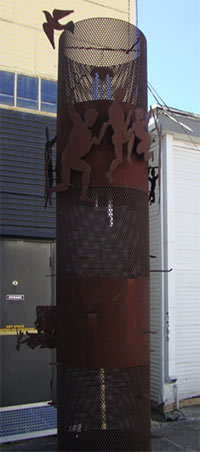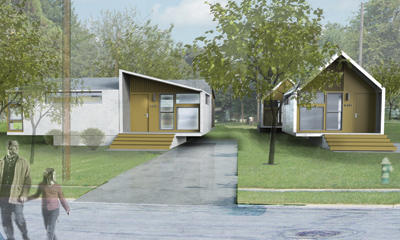
 Steering his bike carefully to avoid the thousands of caterpillars covering Maury St., just off the Elysian Viaduct north of Downtown, 2-wheeled wanderer and lawn-art enthusiast Robert Boyd stumbles across the Fifth Ward workshop of Blumenthal Sheet Metal:
Steering his bike carefully to avoid the thousands of caterpillars covering Maury St., just off the Elysian Viaduct north of Downtown, 2-wheeled wanderer and lawn-art enthusiast Robert Boyd stumbles across the Fifth Ward workshop of Blumenthal Sheet Metal:
The official address is 1710 Burnett St., but it appears that their facility takes up a whole block–Leona on the south, Burnett on the north, Hardy on the west and Elysian on the east. Blumenthal is a sheet metal fabrication plant, which makes them on the face of it no different from hundreds of small industrial firms in Houston (the secret engines of our city’s economy). Blumenthal has been in business for over a 100 years, which definitely distinguishes them, but what also distinguishes them is that a lot of the fabrication they do is for artists.
Boyd snaps photos of a few Blumenthal constructions in the area:















